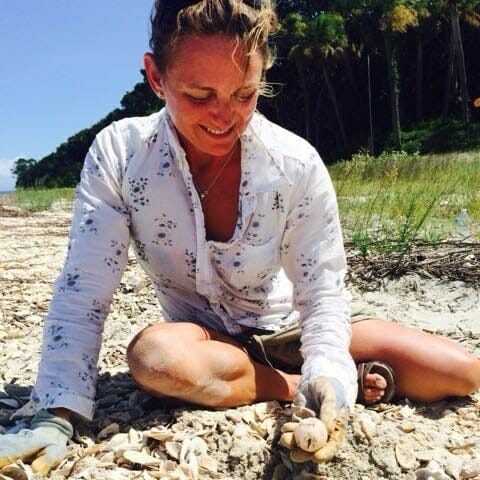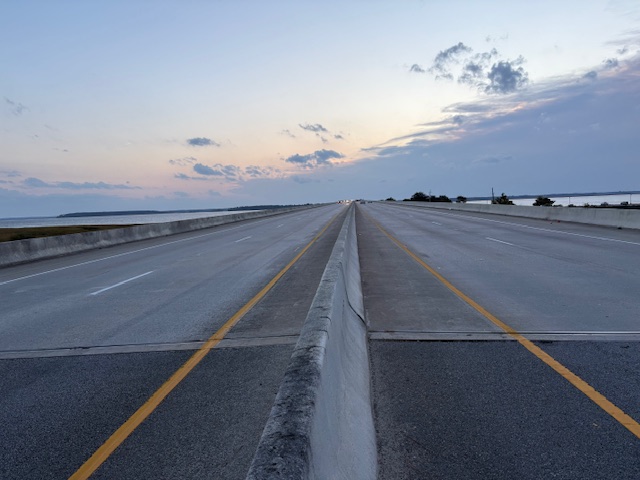By Bill Rauch
The sea turtle nesting season is fully upon us now and hundreds of our friends and neighbors are up each morning before dawn going down to the beaches checking on known turtle nests and looking for new ones that might have been created the previous night.
The most common species of sea turtle, the loggerheads, have been endangered since the 1970s, so the stakes are high and every nest counts.
Although they are more widespread now, turtle watch projects have been going on since the 1980s on Hilton Head, Pritchard’s, Hunting, Capers, Fripp and Edisto islands, to name a few.
But there is a new excitement recently among the volunteers since a pair of University of Georgia researchers discovered they can track via their captured DNA turtle families. Now, instead of just trying to protect sea turtle nests from perils and predators (like high tides, dogs and raccoons), the volunteers are asked also to select one egg from each nest and send it – accompanied by a map that shows the location of the nest from which that egg was removed – to a UGA lab where analysts extract from the inner membrane of each shell a sample of the mother’s DNA.
The research, now in its eighth year, is beginning to show surprising results.
It shows, for example, that many mature female sea turtles return to familiar beaches to lay their eggs. Because the genetic testing can also link mothers to daughters, the study is also showing that in some cases daughters nest faithfully on the same beaches their mothers prefer while other daughters hit the road looking for a better life elsewhere.
Egocentrics that we are, we cannot of course resist comparing the turtles’ behaviors to our own. Some mothers’ daughters stay close; others roam a little and then come home to have their babies; and then there are those who never come home. Some of us go to the same beach community all our lives. Others wouldn’t go back to that place on a bet.
Do any of us really know why?
As one might imagine, life moves at a slower pace in the turtlesphere, and the DNA testing confirms this. It takes for example, about 30 years for a female loggerhead to reach reproductive maturity. Then, for the next 70 years, the typical mother will nest every three or four years.
In a year when a mother is nesting she will lay four to seven nests which may be right next to one another on one beach, or on several nearby beaches.
Once in the nest it takes about eight weeks for the turtle eggs to hatch, after which time the defenseless little hatchlings make their perilous way down the beach, out into the Gulf Stream and east to the Sargasso Sea where tagging studies have shown the youngsters grow safely to maturity under the cover of the seaweed there.
What seems so unemotional as DNA testing has actually brought with it for the turtle-watch volunteers a personal and loving result. Now, after they have become familiar with the study’s results for their specific area, volunteers can begin to get to know the turtles whose nests they are watching.
Samantha Campbell is the DNR Marine Turtle Permit-holder for Land’s End and Coffin Point on St. Helena Island. Last week there were seven nests on the Land’s End beach and 15 at Coffin Point. Campbell and her volunteers know their beat. They patrol it every morning.
Because of the DNA test results, the Land’s End volunteers now know that one of the nesters there is a loggerhead they call “Agatha.”
Early in the study, tests in 2011 and 2013 showed that Agatha had returned to Land’s End those summers to nest. She was a regular, they knew, because she had laid six and four nests there respectively those two summers.
But when 2015 went by with no sign of Agatha, the Land’s End volunteers were despondent.
“We thought maybe she had died,” volunteer Nina deCordova says. “So when we got the test results back in June of this year that she had nested here again we turned handsprings.”
With a hand up from the turtle exclusion devices shrimpers now use, and while still endangered, the loggerheads seem to be making it.
The DNR’s website, for example, indicates volunteers on Hilton Head Island have identified 363 nests this year, more than double Hilton Head’s annual average of 150 … and the ladies are still coming ashore.







